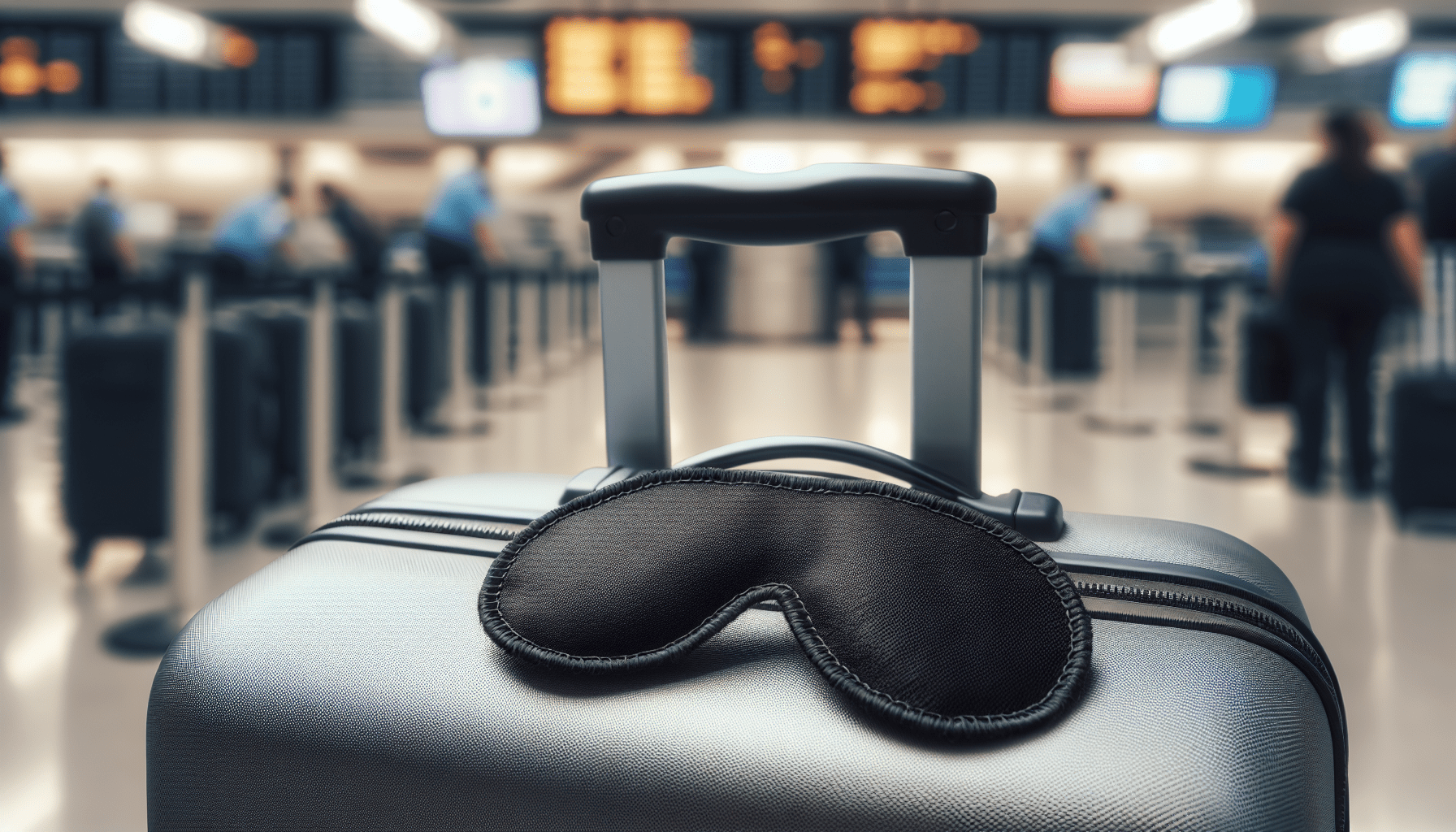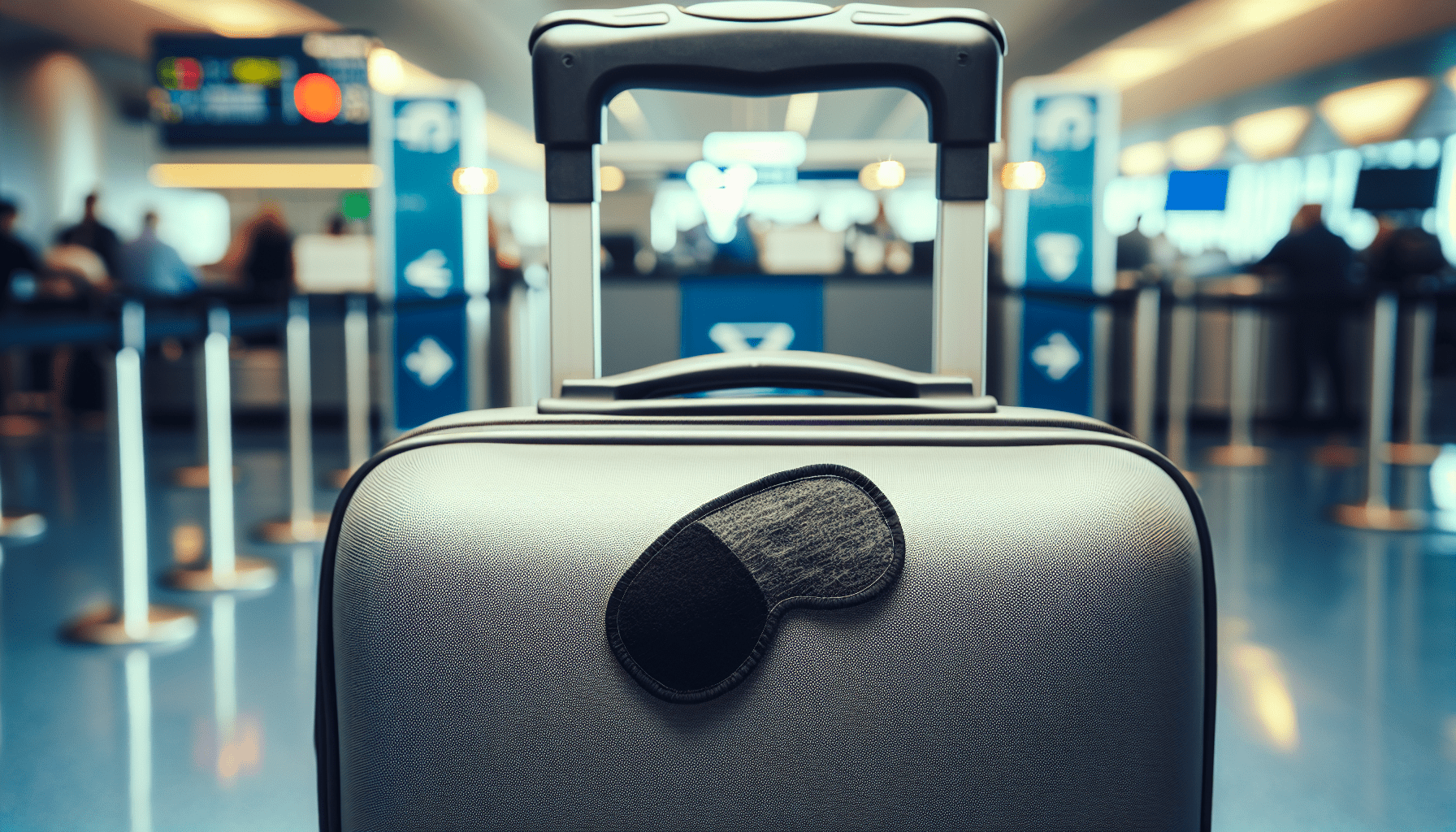Touchland Mist Case for Power Mist and Glow Mist (1FL OZ), Protective and Stylish Hand Sanitizer Spray Accessory, Silicone Case with Keyring, Bubblegum Pink
$6.00 (as of November 23, 2024 15:27 GMT +00:00 - More infoProduct prices and availability are accurate as of the date/time indicated and are subject to change. Any price and availability information displayed on [relevant Amazon Site(s), as applicable] at the time of purchase will apply to the purchase of this product.)Have you ever wondered if wearing an eye patch through TSA could cause you any trouble? Anyone who has traveled knows that navigating airport security can be a hassle. You meticulously pack your liquids according to the strict 3-1-1 rule, remove your laptop from its snug little bag, and shed your comfy outerwear like you’re on a catwalk. But what if you have an eye patch? Life with an eye patch has its own set of daily challenges, but when it comes to airport security, it can sometimes feel like you’re stepping into a whole new level of scrutiny.
With tales of travelers being subjected to lengthy security checks because of their medical eye coverings, knowing what to expect can make your journey a little less stressful.

Shop These Accessories for a Comfortable Trip
Eye Patches and TSA: What’s the Deal?
You’d think an eye patch would be the least of TSA’s worries, but that’s not always the case. Let’s get down to basics. TSA is no stranger to scrutinizing every detail of your luggage and person, and they can be particularly curious about any anomalies.
Not Against the Rules
Surprisingly, or perhaps not, eye patches are not forbidden by the TSA. According to the TSA guidelines, medically necessary items, including external medical devices and bandages, are permitted through screening checkpoints. Medical masks, orthopedic braces, and yes, even eye patches fall into this category.
For quick clarity, here’s a table summarizing medically necessary items typically allowed by TSA:
| Item | TSA Policy |
|---|---|
| Eye patches | Allowed |
| Prosthetic eyes | Allowed |
| Medical masks | Allowed |
| Orthopedic braces | Allowed |
Despite the guideline that eye patches are A-okay, there’s a catch. With TSA being particularly vigilant about potential threats, an eye patch can sometimes cause confusion or warrant additional checks. @oneeyemodel from TikTok is a prime example. His video documented a frustrating experience where he was taken to a back room for further inspection just because of his eye patch.
The Extra Screening Process
Should you be pulled aside for extra screening, don’t panic. This is standard procedure when something catches the agent’s eye (pun intended). Typically, this additional screening might include a quick inspection of the eye patch or a test of your hands for traces of explosives. Normally, you won’t be asked to remove the patch, but informing the officer beforehand can help expedite the process.
What You Need to Do Before Arrival
Planning ahead can make the entire process smoother and less stressful. Here are steps you should consider before you even set foot in the airport.
Arrive Early
Security procedures can be unpredictable, especially when you have a medical device. To avoid the stress of potentially missing your flight, give yourself extra time. Arrive at the airport earlier than usual. This allows you to go through any additional screening without the ticking clock of an imminent departure.
Notification is Key
TSA agents are people too, and they appreciate being informed. When you reach the security checkpoint, let the officers know you’re wearing a medically necessary eye patch. A brief heads-up can sometimes prevent misunderstandings and speed you through the line.

Shop These Accessories for a Comfortable Trip
Eye Patches Aren’t Just for Blindness
Eye patches can be necessary for a myriad of reasons, not just blindness. Whether you’re shielding your eye post-surgery, protecting a sensitive area, or managing a medical condition, your eye patch is vital.
Surgery and Medical Conditions
After an eye surgery, doctors may recommend wearing an eye patch to protect the area. This protective measure can help prevent complications and promote healing. Similarly, medical conditions such as amblyopia, also known as lazy eye, can require the use of a patch.
Everyday Practicality
For some, it’s less about surgery or medical conditions and more about day-to-day practicality. If you’ve ever dealt with recurring infections or extreme light sensitivity, you know how life-saving an eye patch can be.
Costume or Functional? Make It Clear
You’d think costumes or decorative items would be flagged, but in some scenarios, even medically necessary items aren’t immune to suspicion.
Halloween and Cosplay Concerns
It’s not uncommon for people to dress up and wear eye patches as part of their costumes. TSA states that costumes are generally allowed through security, provided they don’t contain potentially dangerous elements. However, Halloween masks and other full-face alterations should be packed away until you clear security.
If you happen to wear an eye patch that could be mistaken for a costume piece, make sure to inform the officers immediately that it serves a medical function.
Prosthetic Eyes at TSA
You might think prosthetic eyes are just as likely to cause issues as eye patches, but that isn’t usually the case.
Allowed Through Security
Prosthetic eyes, much like eye patches, are approved by TSA. Most modern prosthetics are made of acrylic, which doesn’t trigger metal detectors. However, to be on the safe side, tell the screening officer about your prosthetic eye before the process begins.
Avoiding Common Issues
While you won’t need to remove your prosthetic eye for inspection, additional checks may still occur. If you decide not to wear your prosthetic while going through security, pack it carefully in a protective case within your carry-on. When it comes to cleaning solutions, TSA’s liquid rules don’t apply to medically necessary liquids. Just declare them to the officer and explain their purpose.
Conclusion: What Should You Keep in Mind?
Navigating airport security with an eye patch doesn’t have to be daunting. Being prepared and well-informed can significantly reduce any inconvenience typically associated with such screenings.
Plan Ahead
Arriving early and informing the TSA officers about your eye patch can save you from unnecessary stress. Preparation is your best friend when it comes to airports.
Use Clear Communication
A little bit of communication goes a long way. Telling the officers that your eye patch is medically necessary can prevent misunderstandings and speed up the screening process.
Stay Informed
Knowing the TSA guidelines and what to expect can help you feel more confident and less anxious. Awareness is the first step toward a smooth travel experience.
After all, your goal is to reach your destination without any unpleasant surprises, and with some planning and communication, you’ll be well on your way. Traveling with medically necessary items like an eye patch is your right, and knowing how to handle TSA checks can make the journey a lot smoother.
Shop These Accessories for a Comfortable Trip






